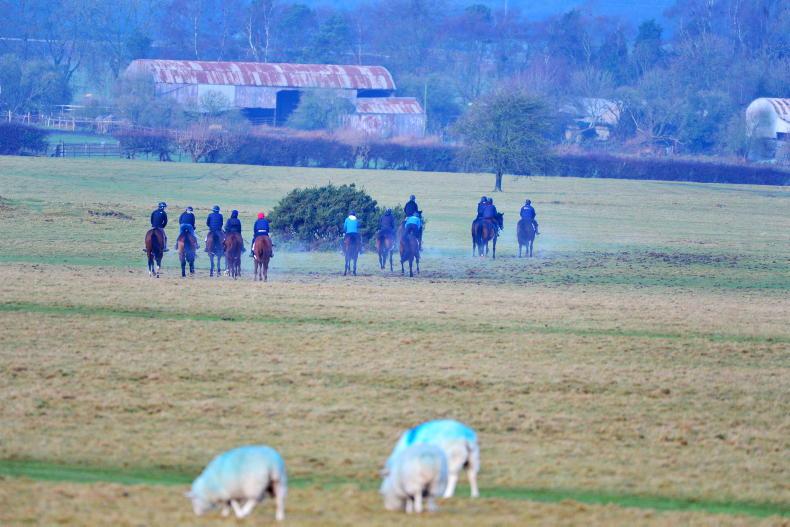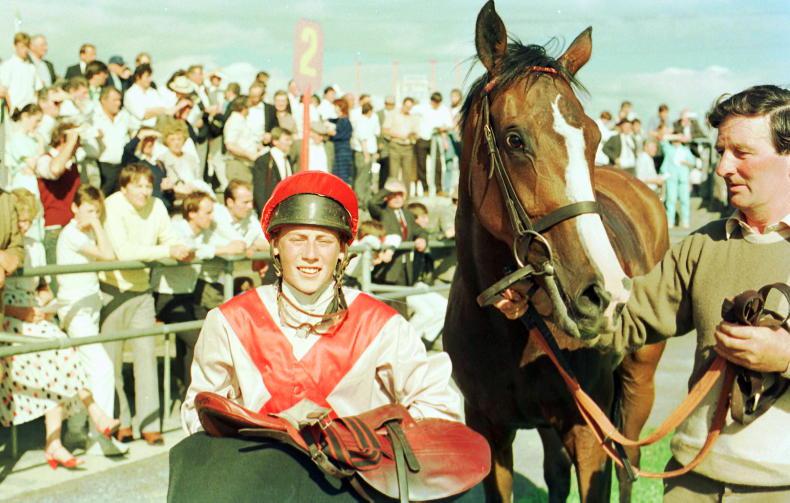HOPES for three-year-old Take Heart were perhaps dashed for trainer Johhny Murtagh at the weekend but the energy is always high at Fox Covert Stables where Murtagh, his wife Orla, and his team, run a tight ship. Murtagh knows the Curragh inside out and enjoys the thirty miles of gallops which he firmly believes ranks among the best there is. As last year’s documentary Johnny Murtgh: Create Belief revealed, Murtagh has made mighty changes but how has his relationship with the thoroughbred shifted and how has his horsemanship evolved over time?
Helen Sharp (HS): You’ve said before that the boxing you did as a youngster gave you balance, strength and courage as a jockey, what did being a jockey teach you about being a trainer?
Johnny Murtagh (JM): I used to question myself, did I really like horses because I used to get on them and just make them go as quick as they could. I probably always loved them but now that I’m a trainer, I love them even more. I’m here with them 24/7 you know; you feed them first thing in the morning, you feed them last thing at night. They are a remarkable animal. They are so smart, clever, they all have their own different personalities.When I was riding them, I probably could identify ground trip, you know, by the feel. And it’s the same now with the horses as I’m training, I see what they like and what they don’t like and then I play to their strengths. I don’t try to ask them to do something they don’t want to do. Or if they don’t like doing it you know, I just don’t ask them to do it. We have the facilities here in the Curragh to get them physically fit, it’s just mentally keeping them sound and keeping them mentally in love with the game.
HS: What, in your opinion, has the greatest impact on soundness?
JM: I think the gallops we have are a help, the sand and fibre gallops here on the Curragh. I use that most days and I think that’s very good for their soundness. But on the gallops I find it’s where you trot them and then hack them, and it’s the next step - that’s when they can pick up their injuries. It has to be kind of just slow, slow, progress. And no dramatic going slow, slow, slow, quick. It’s bringing them along slowly, slowly, slowly, and then when you ask them for more, then they are able for that next step.
For me, the big three months here are January, February and March. If we can get that block of work into them they are ready for the next block. If they are ready for the next block, they are ready for the next and so on. But if they miss some of that, or are not able for some of that, they struggle for the next block. That’s why horses that come back or pick up injury early in the year, it’s hard for them to then be consistent through the rest of the year. That’s what I’ve found.

HS: Watching you out and about on the yard you’re 100 miles an hour, but patience has really become something for you when it comes to the horses, hasn’t it?
JM: It has. Patience is a big thing – the two words you need as a trainer - patience and resilience.
HS: And what part does instinct play in your training?
JM: I go on a lot of instinct. Like, I might get up one day and something would trot out by me and I’d go, ah-ah- no! I go on a lot of instinct.
HS: Is that a niggling feeling? How does instinct feel?
JM: I don’t quite know what I feel, if it just doesn’t look right or you know, maybe it’s nothing, but sometimes I just get that feeling. And if I go against the feeling, it never works out well. I’m learning more and more to go with that feeling.
HS: With the two-year-olds, how do you compensate for the changing physicality, how does that affect the training?
JM: Two-year-olds change every week, I don’t make any fast judgements on them. I don’t care what they are by, or what they are out of, I just train them along. I’m not a big man for looking at the pedigrees. But I have to have a couple of runs and if I’m struggling with their trip, then I might look at their pedigree. But I just train what I see in front of me.
We have 20 or 30 two-year-olds up here at the moment and we’ve only had one sore-shinned two-year-old this year. So, there’s no dramatics, because they only get sore shins if they are not ready, immaturity. Now we haven’t had that many two-year-old winners, but I do believe we have nice two-year-olds and if we train them like that, we’ll give them the best chance of being as good as they can be.
HS: What are your observations training fillies and colts, any differences?
JM: Colts, they need maybe a bit more of being on top of them, they need manners. The fillies like the paddocks and they enjoy going out there for a little run twenty minutes after they ride out. But work wise, there’s not much difference - the big filly can eat the same as a colt. It’s just a matter of keeping the colts in check and not letting them get above themselves.
HS: What’s the best piece of training advice you ever got?
JM: I think it was from John Oxx. He said you just have to be patient, you have to be here all the time, just looking at the horses constantly. Looking at them going up the gallop, we are not looking for anything special, we are just looking for no negative – that they are moving the same as they always do. When you are watching them every day, you get to see the way they move and the way of their little characteristics. If some of them are off, then you are wondering.
I feed them at half-nine every night myself and that’s when you see them in their best place. They are in their comfort zone, nice and calm and they all do everything the same: the same ones come up to you, the same ones turn their backs to you, the same ones eat the food quickly. If there’s something, if you are going in and one of them didn’t do that particular thing, you are lying in bed thinking, ‘I wonder is he okay?’ So it’s just being patient and being here constantly.

HS: Is there anything Irish racing can do for trainers that they are not doing at the minute?
JM: I suppose the bad debtors, you know, they shouldn’t be allowed to move. There should be a block on them. That would be the one thing: if a guy owes me money and I ring the Turf Club and say this fella owes me money, he should not be allowed go up the road and give it to someone else. Doesn’t happen anywhere else in the world, we need tighter control on that.
HS: Is there anything you think trainers can do that will have an impact on a thoroughbred’s aftercare?
JM: You hope they have a good home after. I have some down in the field, but just putting them out in the field is not the answer. I had a horse called Royal Diamond and I put him out in the field and when I took the rug off him I was shocked. He was just sulking. I sent him to RACE and he’s down there now, he’s the king! He just was one that loved the routine - just loved being in the racing environment and RACE suited him down to the ground.
I don’t know what age he is now but he looks better and better every time I go down to see him compared to him being the ‘oh I’ll mind him down the bottom field’ horse. If you can get them to a good home, most can be turned into riding horses or show horses.